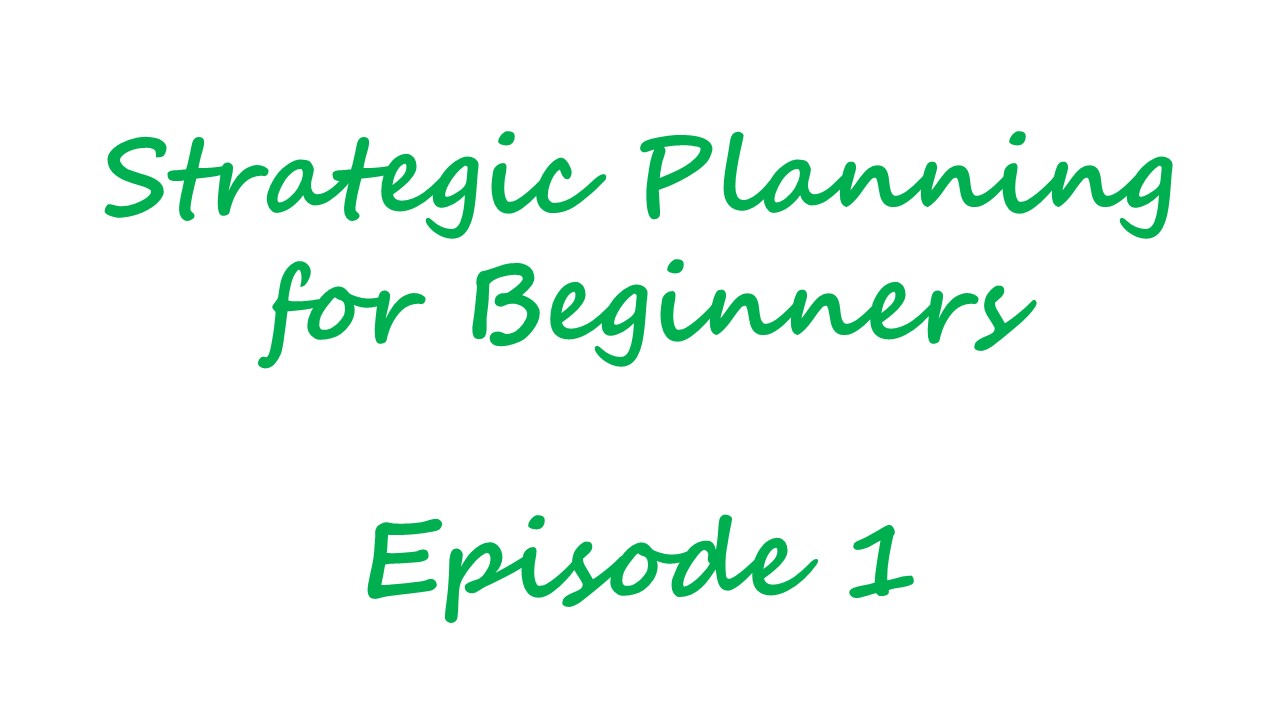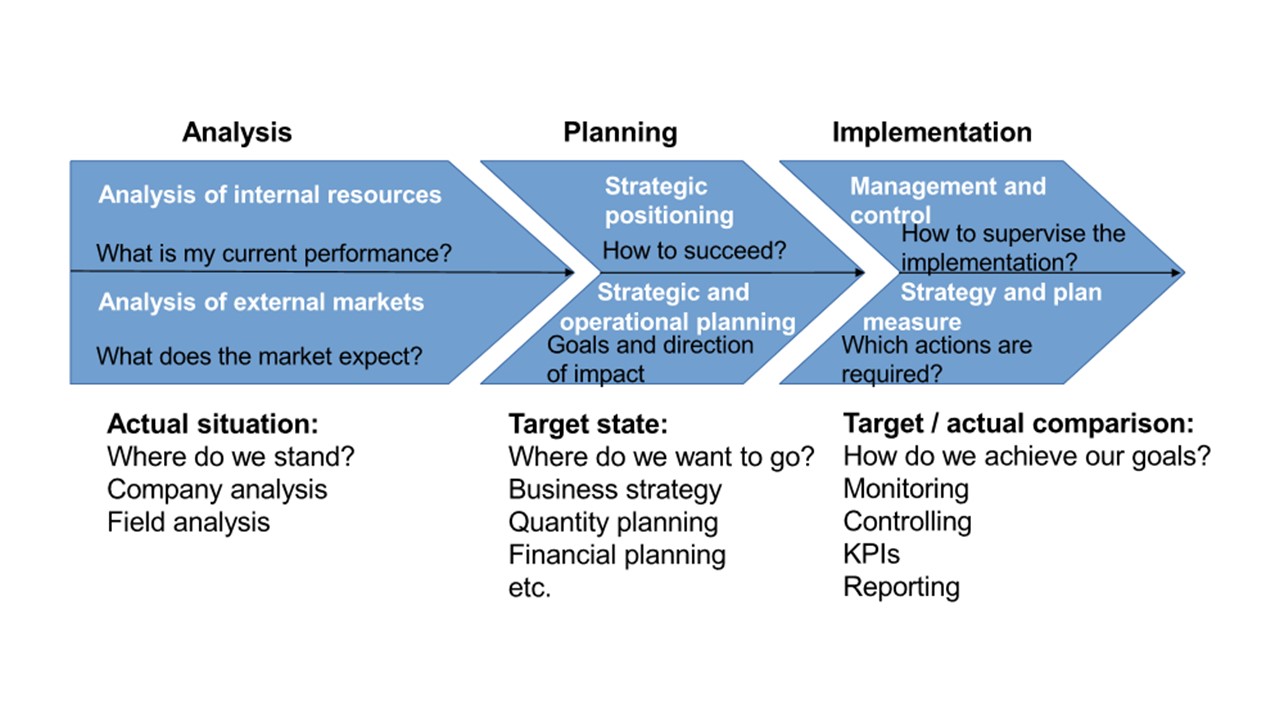 Have you ever consciously thought about the future of your organisation? You should do that! Many of our clients initially had no idea where they wanted their organisation to be in 5-7 years. They lived for the moment and made their decisions by gut feeling. However, when it came to a challenge or crisis, they were overstrained and could not give the organisation any rescuing impulses. The following explanations are intended to provide insight into why entrepreneurs and managers should always have a forward-looking plan. You can even use the steps explained as an individual plan for your life.
Have you ever consciously thought about the future of your organisation? You should do that! Many of our clients initially had no idea where they wanted their organisation to be in 5-7 years. They lived for the moment and made their decisions by gut feeling. However, when it came to a challenge or crisis, they were overstrained and could not give the organisation any rescuing impulses. The following explanations are intended to provide insight into why entrepreneurs and managers should always have a forward-looking plan. You can even use the steps explained as an individual plan for your life.
The term “strategic planning” is also known as “long-term planning” or “corporate planning”. These alternative names give some insight into the nature of strategic planning. It considers the longer term (a time horizon of about five years or beyond), considers the whole organisation, gives direction to the whole organisation, and integrates its activities. It also considers all stakeholders, looks at how to gain a sustainable competitive advantage, and relates the organisation, its resources, and competencies to its environment.
A strategic plan is a document used to communicate the organisations mission, vision, goals, objectives, and the actions needed to achieve those goals and objectives by which success will be judged. A strategic plan generally includes:
- The organisation’s vision, mission, and value statements
- A strategic analysis, i.e., in the form of a SWOT analysis (strengths, weaknesses, opportunities, and threats)
- An explanation of the ways to achieve strategic goals and objectives
- An action plan
- Budgets and operating plans
- Detailed monitoring and evaluation methods
The following is a brief overview of relevant facts for developing a strategic plan.
Vision Statement as Destination
A vision statement gives the company a goal: It is the future of the business, which then provides the purpose. The vision statement is about what the company wants to become. It should be aspirational – maybe not quite attainable in the short or medium term – it’s a stretch.
Vision Statement as Direction
The vision statement promotes growth, both internally and externally. A strong vision helps teams focus on what matters the most for their company. It also invites innovation. A purpose-driven company envisions success because they know what success means for their company.
Mission Statement
A mission statement focuses on today and HOW an organisation will see to fulfill its vision. It drives the company. It is what you do/the core of the business and from it comes the objectives and finally, what it takes to reach those objectives. It also shapes the company’s values/culture.
Mission statement questions look like this:
- What do we do?
- Who do we serve?
- How do we serve them?
Value Statement
A value statement is a set of ideals that explain what your company believes in and how it operates. It informs all internal and external stakeholders about what principles guide your business. So, it is the foundation of your organisation’s culture.
Strategy Development
The following illustration can serve as a guideline for strategic development/planning. Further details of the 3-step approach are given below.

1. Internal Analysis
A typical way to start with an internal analysis is to look for strengths and weaknesses. Both relate to resources, competencies, and capabilities.
Resources can either be tangible ones (like labour, buildings, or equipment) or intangible ones (like knowledge, culture, or reputation/image).
Distinctive competencies and capabilities differentiate a business from other competitive businesses. These can be related to functional areas like:
- Management: The effective use of management techniques or the ability to envision the future of the business.
- Human Resources: Motivating, empowering, and retaining employees.
- Marketing: Effective promotion of brand-name services, effective customer service, and innovative merchandising.
- Information Systems: Effective and efficient ERP systems, innovative technology, digitalisation.
To become a core competence and a source of competitive advantage, a capability must allow the company to perform an activity in a manner that provides superior value relative to competitors, or to perform a value-creating activity that competitors cannot perform. A good model for examining a company's core competencies to determine which capabilities and resources can give the company a competitive advantage is the VRIO method, developed by Professor Jay Barney.
The VRIO framework looks for the core competences (C) & resources (R) of the company, to find out where the competitive advantages of the company are. The company management should ask themselves four questions:
- The Question of Value: Can the C & R be used to gain a value advantage from it or are they creating value? What value have the C & R compared to the competitive environment?
- The Question of Rareness: Are the C & R unique or short in supply in the competition? Only the C & R through which companies differentiate, are real benefits.
- The Question of Imitability: Can other companies copy the own C & R and if so at what cost? Are protective measures needed to be taken?
- The Question of Organization: Is the company structured in a way that the competitive advantages are fully exploited (or could be)?
By finding answers to these questions, the sore competences can be analysed related to existing and new markets. Answers can also be used to acquire or to develop specific core competencies for target-specific applications. Existing core competences applied to existing markets will only fill gaps. You will see your chances to improve your position in existing markets by leveraging and exploiting your existing core competencies in a better way. Whereas new competences in existing markets will lead your organisation to an outstanding position. So, figure out what new core competences your company needs to build up to protect and expand your exclusive position in your current markets!
With your existing competences you fill find mega-opportunities in new markets. Try to precisely analyse what new products or services you can provide, as you re-use your existing core competencies in creative ways or combine them differently! Finally, white spots can be detected when it comes to apply new core competences to new markets. You will understand what core competences you would have to build in order to participate in the most exciting markets of the future!
Managers should now ask themselves: Do I have a clear and shared understanding of how the industry may be different ten years from now? Is my company’s point of view about the future unique among competitors? This will lead us to the external analysis which will be discussed in a further episode of ‘Strategic Planning for Beginners’.
